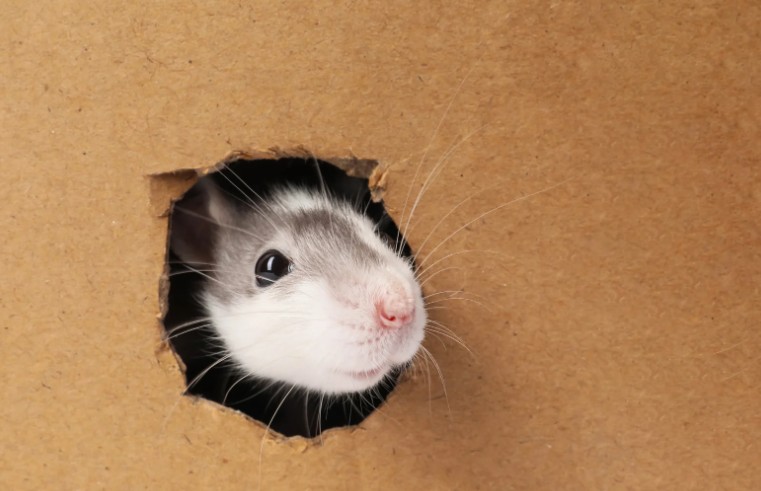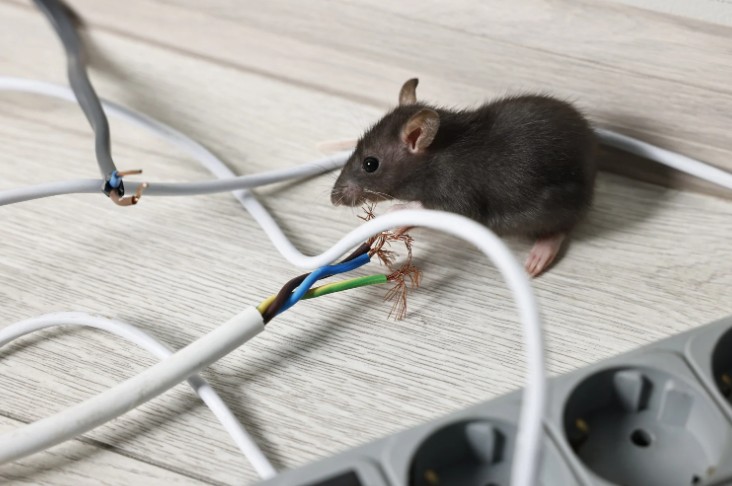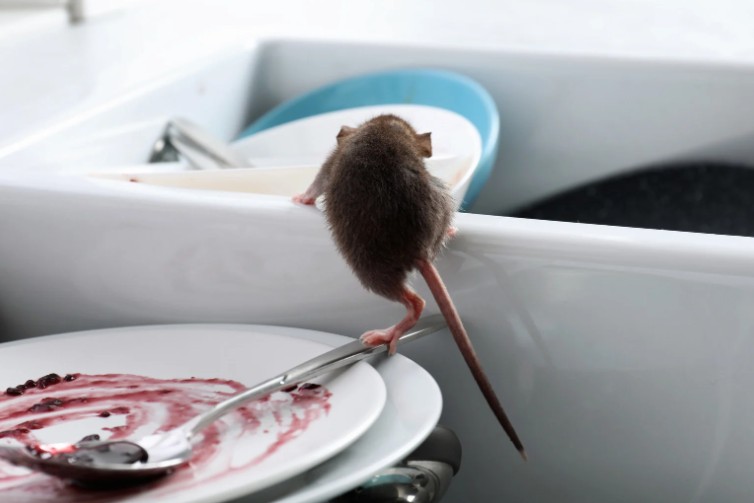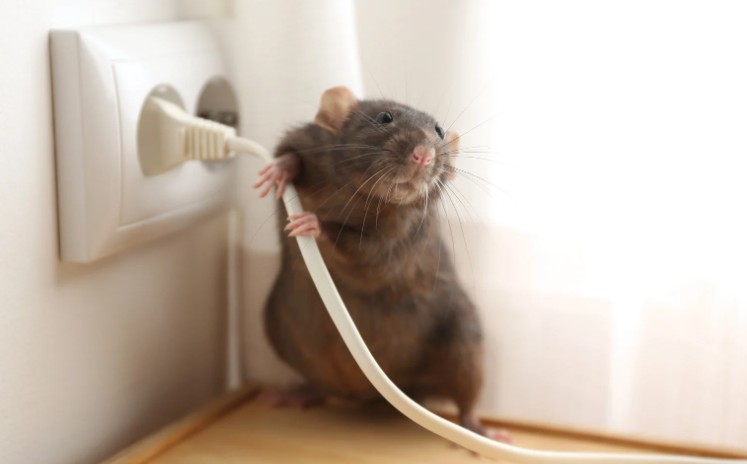- Why Understanding Entry Points Is Key to Stopping Rats?
- How Do Rats Get in Your House in the UK?
- What Are the Most Common Rat Entry Points in UK Homes?
- Can Rats Enter Through Drains or Sewer Systems?
- Could Rats Be Getting In Through the Roof or Loft?
- Are There Structural Gaps That Let Rats In?
- Are Broken Vents and Utility Holes Giving Rats Access?
- What Are the Signs That Rats Are Already Inside?
- How Can You Prevent Rats From Getting Into Your House?
- Should You Call a Pest Control Professional?
- Conclusion: Stop Rats Before They Move In
- FAQs – Common Questions About How Do Rats Get in Your House
Rodents are among the most persistent pests in UK households, and if you’ve spotted signs like droppings, scratching sounds, or gnawed food packets, you’re probably wondering: how do rats get in your house?
In this guide, you’ll learn exactly how rats enter homes in the UK, what access points to check, the signs to look for, and how to prevent future infestations effectively.
Why Understanding Entry Points Is Key to Stopping Rats?
Rats aren’t just an inconvenience — they’re a genuine health and safety hazard. They can carry diseases, chew through electrical wiring, and cause damage to insulation, wood, and pipes.
In many UK homes, particularly older or terraced properties, rats take advantage of unnoticed weaknesses.
Knowing where to look and what to seal off can make all the difference between a one-time visit and a full-blown infestation.
How Do Rats Get in Your House in the UK?
Rats can enter your home through the smallest of gaps — as little as 15mm wide. Brown rats, the most common species in the UK, are excellent climbers, swimmers, and gnawers, giving them multiple routes into your property.
They tend to exploit:
- Uncovered drains or sewer access
- Gaps in brickwork or pipework
- Damaged vents and utility holes
- Lofts accessed via trees or fences
- Unsealed doors or windows
If your home offers warmth, food, and shelter — even if it’s clean — rats will take full advantage.
What Are the Most Common Rat Entry Points in UK Homes?
Based on UK pest control data and homeowner reports, the most frequent access points for rats include:
- Air bricks and vents: Especially if plastic or broken
- Drain pipes and sewers: Where damaged or without a non-return valve
- Roof gaps: Along loose tiles, soffits, or fascia boards
- Underside of external doors: Gaps without door brush seals
- Brickwork cracks or holes around pipes and cables
Older properties often have multiple vulnerabilities, particularly if modern upgrades haven’t included pest-proofing.

Can Rats Enter Through Drains or Sewer Systems?
Yes — and this is one of the most overlooked entry points. In the UK, rats often travel through connected drain systems, especially in older houses with clay pipes or shared drainage.
If your pipes are cracked, misaligned, or uncapped, rats can climb up and enter your kitchen or bathroom via waste pipes or even toilets. This is particularly common in terraced or semi-detached houses with interconnected underground systems.
When should you inspect drains for rats?
- You’ve seen rats but can’t find a surface entry point.
- There are bad smells or gurgling sounds from drains.
- You’ve had recurring infestations despite sealing above-ground access.
Installing non-return valves in sewer outlets is one of the most effective solutions.
Could Rats Be Getting In Through the Roof or Loft?
Absolutely. Rats are surprisingly agile and often enter through broken soffits, loose tiles, or gaps in fascia boards. Overhanging trees or vines give them easy roof access.
Once inside your loft, rats tend to nest in insulation, chew on wooden beams, or damage stored items. You may hear scratching, scurrying, or gnawing, especially at night.
Make sure your roofline is secure, and trim any trees or ivy that could serve as a “rat ladder” into your loft.

Are There Structural Gaps That Let Rats In?
One of the easiest ways for rats to enter is through gaps in brickwork, mortar joints, or areas around pipework. These may be tiny cracks — ones you wouldn’t think twice about — but to a rat, they’re an open door.
Common weak spots include:
- Cable entry points
- Water or gas pipe holes
- Crumbling brick mortar in older walls
Use cement or expanding foam rated for pest control to seal these gaps. If you can poke a pencil through a gap, a rat can probably squeeze through it.
Are Broken Vents and Utility Holes Giving Rats Access?
Air vents, extractor fan ducts, and utility service holes are often left unsealed or covered with thin plastic grilles that rats can chew through.
This is particularly common in renovations where trades have drilled entry holes for broadband, gas, or electric without sealing the gap around it.
Use rodent-proof mesh or metal vent covers to block access, and inspect the interior side of vent systems for signs of chewing or nesting.
What Are the Signs That Rats Are Already Inside?
It’s not always obvious that you have a rat problem — especially early on. But over time, certain signs become unmistakable.
Here’s what to watch for:
- Scratching or scurrying sounds, especially at night
- Droppings that are small, dark, and spindle-shaped
- Gnawed food packaging, pipes, or wiring
- Grease smears on walls and skirting boards
- A musky or ammonia-like odour, especially in confined spaces
Rats often travel the same routes repeatedly, leaving behind visual and scent trails.
How Can You Prevent Rats From Getting Into Your House?
Preventing rats involves more than just trapping them once they’re inside — it’s about cutting off every route they might take to get in.

What Are the Key Prevention Steps?
- Seal entry points using concrete, metal mesh, or pest-rated foam.
- Install door brush strips on all external doors.
- Cover vents and drains with rodent-proof grilles or one-way valves.
You should also reduce attractants by keeping bin lids tightly closed, cleaning up garden waste, and storing food securely inside.
Should You Call a Pest Control Professional?
If you’ve tried sealing access points and are still noticing signs of rats, it may be time to get help.
Professional pest control services in the UK can:
- Inspect your home thoroughly (including drains and lofts)
- Install traps and bait stations
- Identify hidden access points you may have missed
- Offer long-term proofing solutions
While some councils offer free or low-cost services, private pest control companies can provide quicker, more tailored support.
Conclusion: Stop Rats Before They Move In
Rats are clever, persistent, and highly adaptive. But once you know how do rats get in your house, you’re better equipped to shut them out — for good.
Start by inspecting the key areas: your drains, roofline, vents, brickwork, and utility entry points. Then seal those gaps, keep your environment less inviting, and stay vigilant — especially in colder months when rats are more likely to invade.
Taking these steps now could save you from the cost and stress of an infestation later.
FAQs – Common Questions About How Do Rats Get in Your House
1. Can rats climb walls or fences to reach my roof?
Yes. Rats can climb most vertical surfaces, including brick walls, downpipes, and fences, especially if there’s ivy or a rough texture.
2. When are rats most likely to enter homes in the UK?
Autumn and winter are peak seasons as rats look for warmth and shelter indoors.
3. Do rats return to the same house after removal?
If the entry points are not sealed, yes — rats may return to previously accessed homes.
4. What health risks do rats pose inside homes?
They can spread diseases like leptospirosis, salmonella, and hantavirus, and cause fires by gnawing on wiring.
5. How can I tell if the problem is from the drains?
If you hear noises near plumbing or smell sewage-like odours, or if pest sightings are concentrated in kitchens or bathrooms, the drain system may be involved.


0 Comments